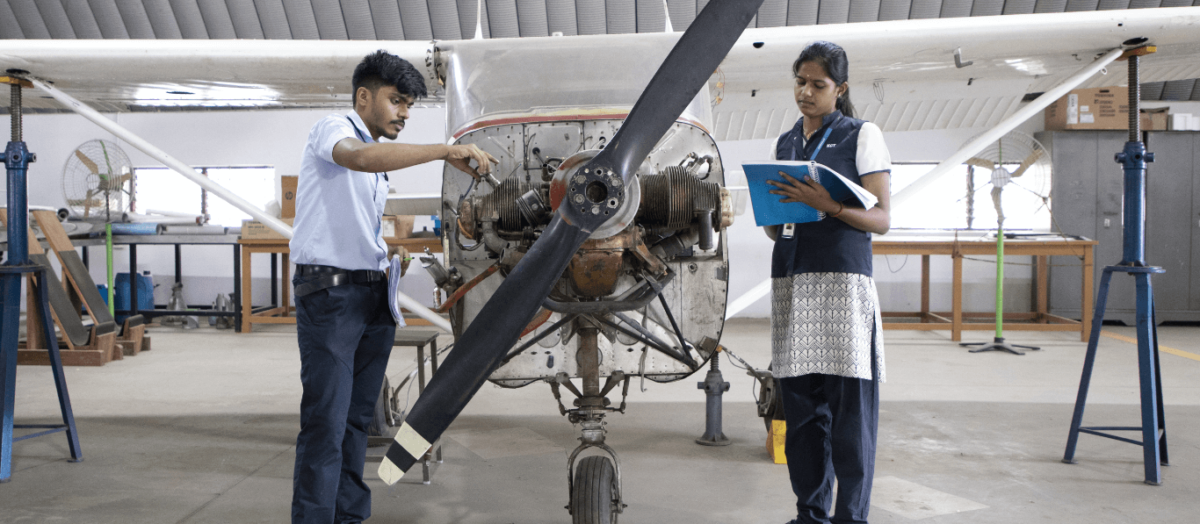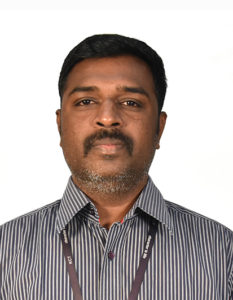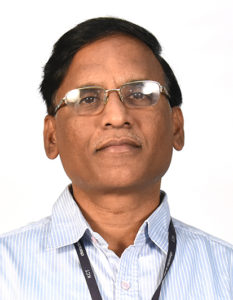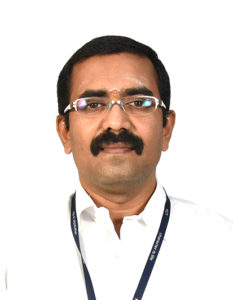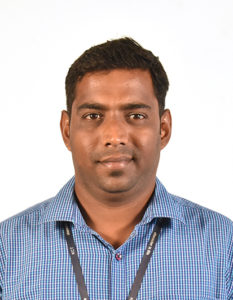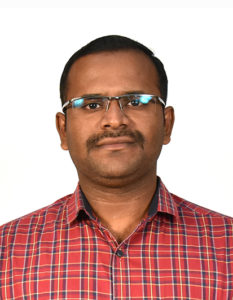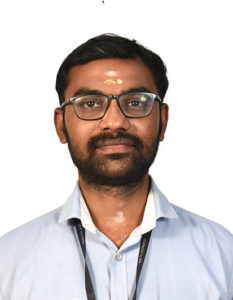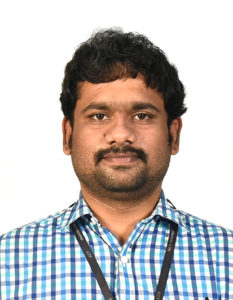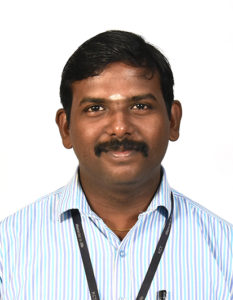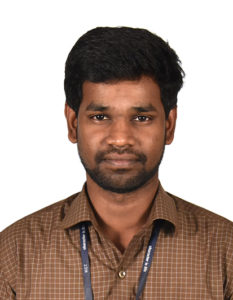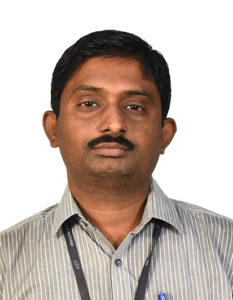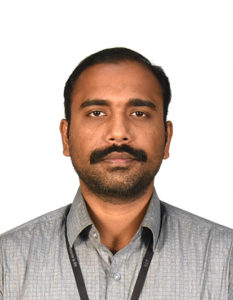About the Department
The Department of Aeronautical Engineering with well qualified and experienced team of faculty members with varied specializations in Aeronautical Engineering stream is committed to provide quality education by innovative teaching-learning processes. The activities of the department are governed by various committees such as Board of Studies and Department Advisory Board in which the external expert members are drawn from educational institutions, industries and research centres of repute and the curriculum is periodically reviewed on pace with the global industrial scenario. Introduction of the Choice Based Credit System enables the students to select the courses of his/her choice in various inter disciplinary areas of engineering. The department has state-of-the-art infrastructure and laboratory facilities providing conducive learning environment to the students and research scholars. The ongoing industry consultancy services and research projects motivate students to learn beyond the curriculum and carry out innovative projects. Various Associations and professional bodies are actively involved in promoting co-curricular and extracurricular activities, to hone the leadership qualities of the students. Internship in the leading industries and research centres such as HAL, NAL, ADA, ADE, DRDO etc provide an opportunity to learn the latest developments in the field of Aeronautical Engineering.
From the HOD’s Desk
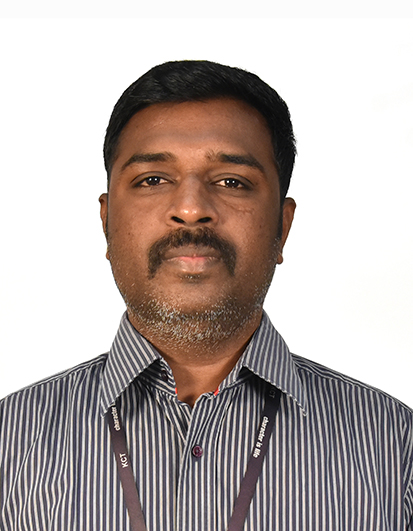
Dr. M. Senthilkumar,
Assistant Professor III & Head
Our undergraduate programme covers the major domains of Aeronautical Engineering such as Aerodynamics, Aircraft Structures, Aircraft Propulsion, Flight Mechanics, Avioinics and Unmanned Aerial Vehicles. The faculty expertise in multiple disciplines and the laboratories equipped with state of the art facilities to cater to the needs of curriculum, research oriented projects and industry consultancy services which are the keys to our success in grooming industry ready students.
Vision
To attain excellence and global reputation in Aeronautical Engineering Education and Research.
Mission
- The department is committed to provide quality education in Aeronautical Engineering to students to build their career and do quality research and thus contribute to the field of Aviation and Aerospace.
- The department aims to prepare students for their higher studies and research to contribute to the advanced technological needs of Aeronautical engineering.
- Encourage faculty to update their knowledge and teaching-learning process through continuous learning.
- Undertake inter-disciplinary research to contribute and support the industry.
UG – B.E. Aeronautical Engineering 4 Years (8 Semesters)
- The undergraduate program imparts students with mastery in the field of aeronautical engineering.
- This program is designed to prepare the graduate for an entry-level position in aeronautical and related fields and for further education at the master’s level.
- The formal learning in the program builds a conceptual understanding in the foundational engineering sciences and professional subjects that span the topics critical to aeronautical. The skills and attributes emphasized go beyond the formal classroom curriculum and include: modeling, design, the ability for self education, computer literacy, communication and teamwork skills, ethics, and—underlying all of these—appreciation for and understanding of interfaces and connectivity between various disciplines.
- Professional area subjects in the four areas of Fluid Mechanics, Materials and Structures, Propulsion, and Computational Tools represent the advanced aerospace disciplines encompassing the design and construction of airframes and engines. Topics within these disciplines include fluid mechanics, aerodynamics, heat and mass transfer, computational mechanics, flight vehicle aerodynamics, solid mechanics, structural design and analysis, the study of engineering materials, structural dynamics, and propulsion and energy conversion from both fluid/thermal (gas turbines and rockets) and electrical devices.
Programme Educational Objectives (PEOs)
To Prepare Graduates to:
- PEO1: Take up careers in Aeronautical domain-related Aerodynamics, Aircraft Structures, Aircraft Propulsion, UAV and Avionics, and other careers that requires aeronautical field expertise
- PEO2: Pursue higher education leading to academic and research careers in the field of Aeronautical Engineering.
- PEO3: Become innovators by the way of grooming their professionalism in Aeronautical Engineering and explore opportunities that come across through their employers and professional bodies.
Programme Specific Outcomes (PSOs)
Graduates of the Aeronautical Engineering Undergraduate Program will have the ability to:
- PSO1: Apply concepts and principles of Aerodynamics, Aircraft Structures, Aircraft Propulsion, Aerospace Materials, UAV and Avionics to provide solutions to critical industrial problems.
- PSO2: Develop appropriate computational methods and tools for the purpose of design and creation of aerospace systems leading to interpretation of outcomes.
- Attained Autonomous status 2008
- MoU with NAL 2010
- Implementation of OBE 2014
- Permanent Anna university affiliation 2018
- MoU with Vales Marines and Aerostat 2019
- Accredited by NBA- December 2019
- AICTE Approved MTech Defence Technology July 2021
- Signed MOU with Unitek Hydraulics-July2021
- Signed MOU with Valeth Hitech Composites Pvt Ltd During December 2021
- Signed MOU with Nextleap Aeronautics during January 2022
| S.No | Name of the lab | Area of each lab | Total equipment costs of each lab | Equipment list in each lab |
|---|---|---|---|---|
| 1 | Avionics Laboratory | 90.68 sq.m | 12,00,000 |
|
| 2 | Low speed Aerodynamics Laboratory | 181.16 sq.m | 18, 07,500 |
|
| 3 | High speed Aerodynamics Laboratory | 168.31 sq.m | 38,66,973 |
|
| 4 | Aircraft structures Laboratory | 181.16.sq.m | 34,73,922 |
|
| 5 | Propulsion Laboratory | 181.16. sq.m | 24,05,633 |
|
| 6 | Aero Design & Analysis Laboratory | 82 sq.m | 35,45,096 |
|
| 7 | Aircraft Systems Laboratory | 132 sq.m | 21,47,713 |
|
| 8 | Airframe and Aero engine maintenance laboratory/Hangar | 168.31 sq.m | 1,02,95,286 |
|
laboratory Images
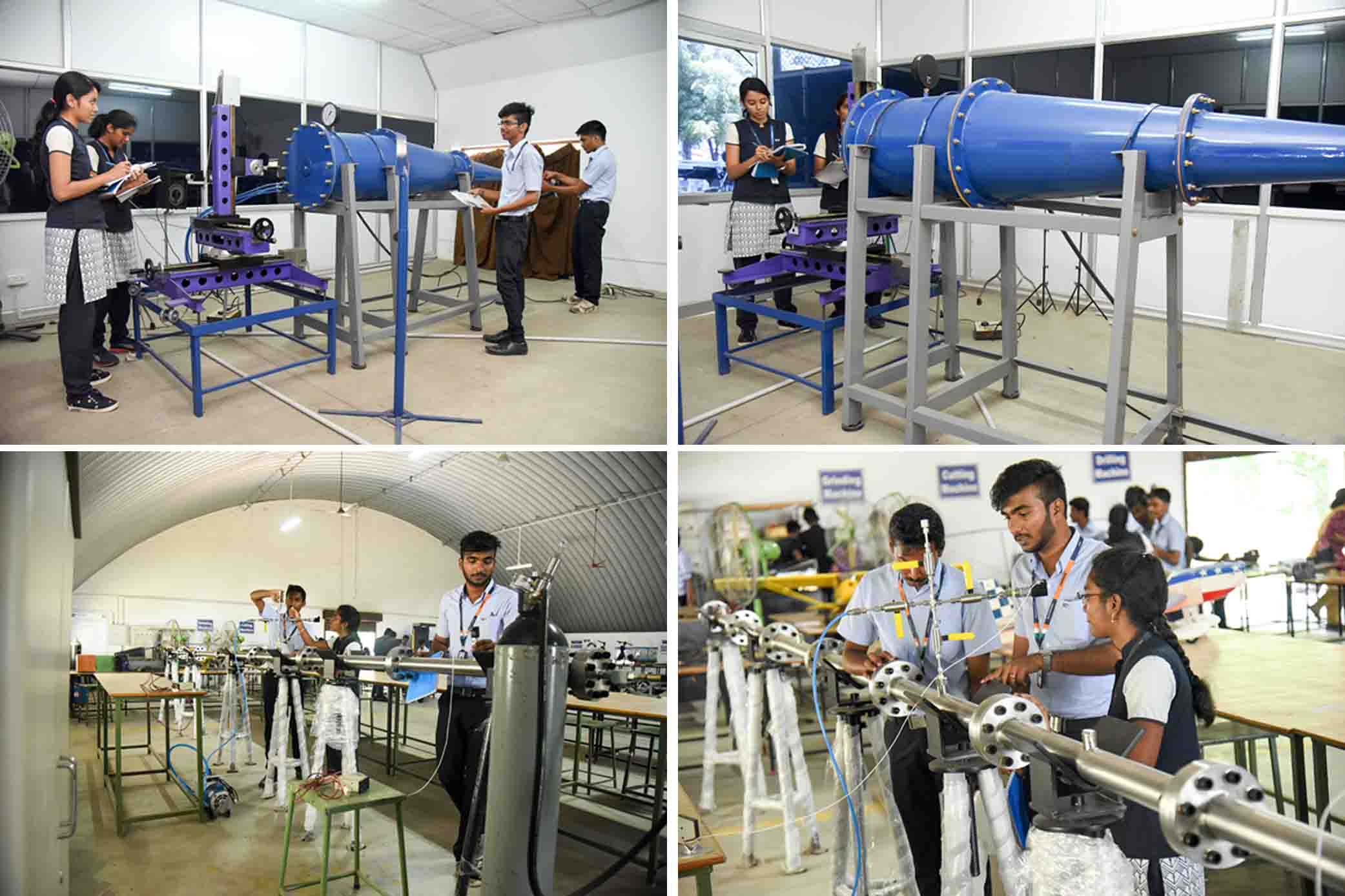

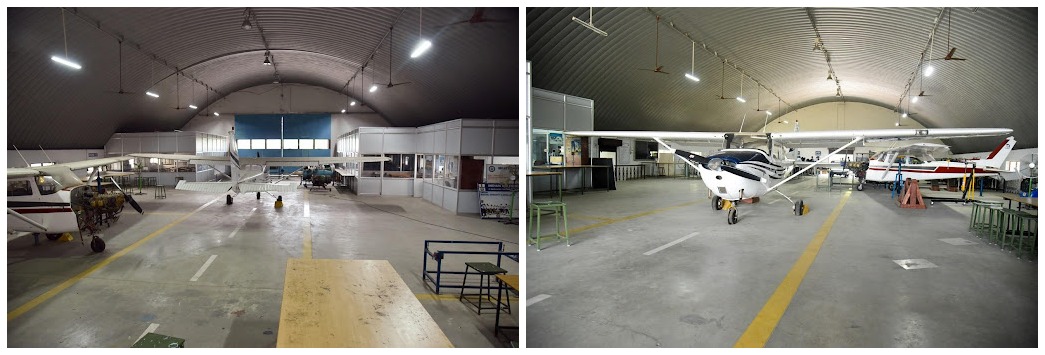

| President | Pavan V | Final year |
| Vice President | Lohith V | Final year |
| Treasurer | Krishna R | Final year |
| Event Coordinator | Nagaraj M | Final year |
| Excecutive Member | Syed Masood T S | Final year |
| Excecutive Member | Tharani Tharan S | Final year |
| Secretary | Rahul N | Third Year |
| Placement and Alumni Co-ordinator | Kathiravan K | Third Year |
| Joint Treasurer | Sneka S | Third Year |
| Entrepreneurship Ambassador | Divakar T | Third Year |
| Higher Education Co-ordinator | Prasitha M | Third Year |
| Joint Secretary | Anusuya V | Second year |
| Social media and Marketing co-ordinator | Kirubanidhi V | Second year |
| Technical ambassador | Hemanth Nithish G | Second year |
| Sport and fitness co-ordinator | Shyam Sundar J | Second year |
| Staff Coordinator | Mr. J Darshan Kumar |
- Unmanned Aerial Vehicle
An unmanned aerial vehicle (UAV) (or uncrewed aerial vehicle, commonly known as a drone) is an aircraft without a human pilot on board and a type of unmanned vehicle. UAVs are a component of an unmanned aircraft system (UAS); which include a UAV, a ground-based controller, and a system of communications between the two. The flight of UAVs may operate with various degrees of autonomy, either under remote control by a human operator or autonomously by onboard computers. There are numerous civilian, commercial, military, and aerospace applications for UAVs. - CFD
Computational fluid dynamics (CFD) is a branch of fluid mechanics that uses numerical analysis and data structures to analyze and solve problems that involve fluid flows. Computers are used to perform the calculations required to simulate the free-stream flow of the fluid, and the interaction of the fluid (liquids and gases) with surfaces defined by boundary conditions. Ongoing research yields software that improves the accuracy and speed of complex simulation scenarios such as transonic or turbulent flows. Initial validation of such software is typically performed using experimental apparatus such as wind tunnels. In addition, previously performed analytical or empirical analysis of a particular problem can be used for comparison. A final validation is often performed using full-scale testing, such as flight tests. - High speed flows
The high speed flow is concerned with flows of fluid at speeds high enough that account must be taken of the fluid’s compressibility. The theory finds application in many branches of science and technology from which we may single out as being of unrivalled importance in the modern world, the applications to high speed flight - Composite materials
A composite material is a material made from two or more constituent materials with significantly different physical or chemical properties that, when combined, produce a material with characteristics different from the individual components. The individual components remain separate and distinct within the finished structure, differentiating composites from mixtures and solid solutions. The new material may be preferred for many reasons. Common examples include materials which are stronger, lighter, or less expensive when compared to traditional materials.
- List of faculty publications during the academic year 2020 – 2021
- List of faculty publications during the academic year 2019 – 2020
- List of faculty publications during the academic year 2018 – 2019
- List of faculty publications during the academic year 2017 – 2018
- List of faculty publications during the academic year 2016 – 2017
Areas of Research
- Unmanned Aerial vehicle
- Natural fibre composites
- Wind turbine aerodynamics
- Fluid structure interaction
- Space propulsion
- Multi-disciplinary design optimization of aerospace vehicles
- Computational and experimental aerodynamics
- Unsteady gas dynamics/ Shock tube experiments
Student Association of Department of Aeronautical engineering
The student association of the Department of Aeronautical Engineering is actively involved in conducting various events regularly to improve the participation in the Co-curricular and Extra curricular activities by all the students. All the students of the department are members of the association, who will elect the office bearers such as President, treasurer etc. Both the inter collegiate and collegiate level programs are regularly conducted by inviting the resource persons from the renowned organizations. The association also utilizes the services of the alumni for career development programs.
Club activities
Aeromodelling club indulge in nurturing creativity in students through designing and fabricating powered and non-powered miniaturized aircrafts. Remote controlled mini drones are built using Balsa, teak and foam with appropriate electronics. Workshops are conducted for the students on Quadcopter designing and flying. Students participate in various National level flying competitions with the support of aeromodelling club. Students are taught with the aircraft and drone modelling from the scratch with a hands-on training.

As part of Aeromodelling club activities, State level flying competition was conducted for school students. More than 20 schools participated in the event.
Event was categorized in to four groups
- RC flying
- Chuck glider
- Caterpillar
- Control lane model
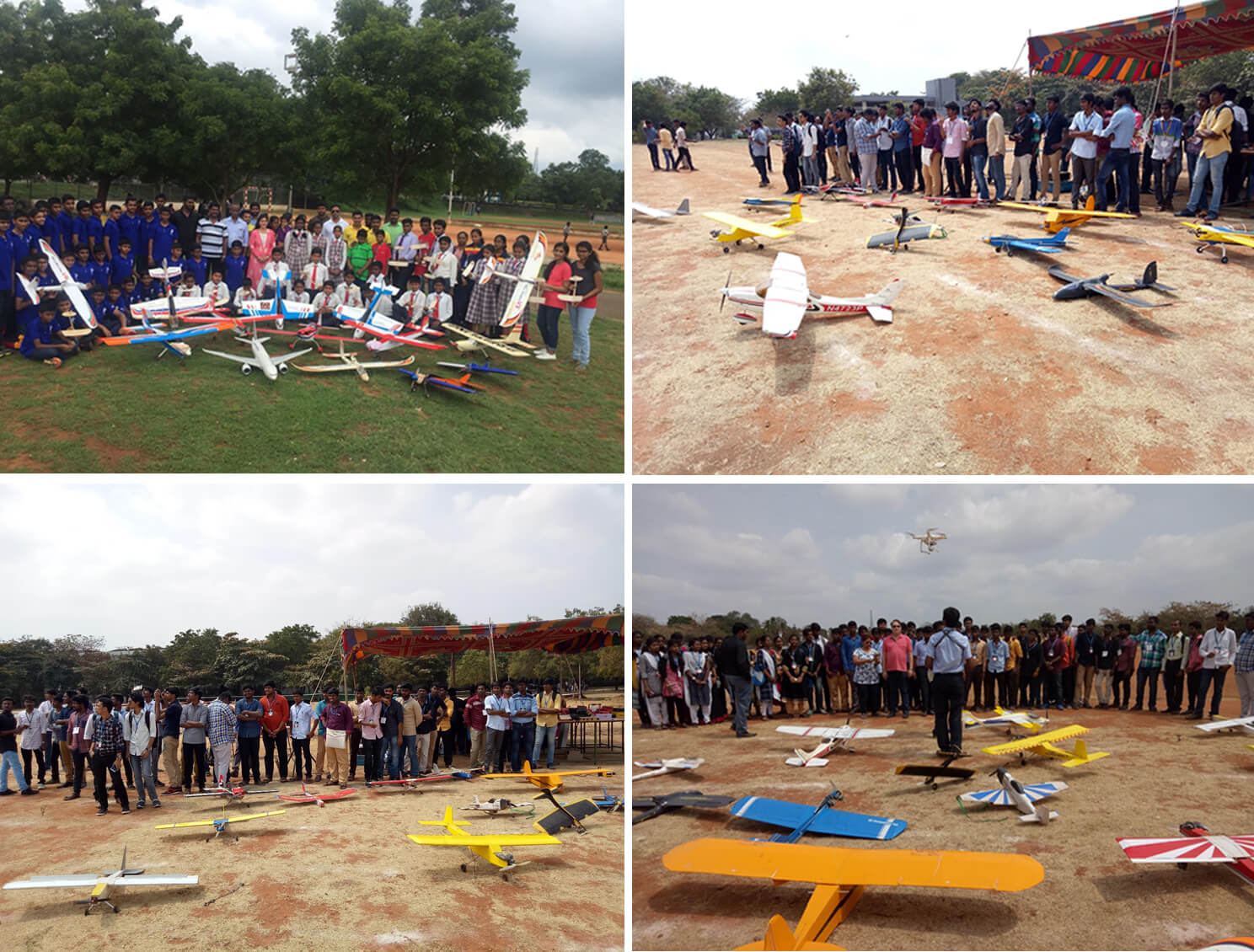
Students for the Exploration and Development of Space
Beyond the obvious
SEDS INDIA is an organization run by students through various chapters in India for space exploration and research. SEDS KCT comes under the directions of SEDS INDIA. Students explore new ideas in the field of Space research. It is a chapter based organization with chapters throughout India, United States, Canada, United Kingdom, Asia, Latin America, and the Middle East.
Goal
Space is infinite and it is not as easy studying a nutshell. So, SEDS KCT ensures students multiply their knowledge about space and its living and persuades them to take up different space projects.
Faculty In charge : Dr. Premkumar P.S.
President: Janarthanan V
Milestones
- Participated in the National level SEDS VIT’s event, Astra 2019.
- 54 Members were taken to ISRO-SHAR Visit by SEDS KCT.
- Attended Indian Space Conclave at VIT, Vellore with 52 students and won third prize in Paper Presentation.
- Papers Presented from KCT in Indian Space Conclave, VIT.
- Space radiation shielding using highly hydrogenated materials
- The use of Space technologies on Earth
- Energy from outer space by the use of Hybrid solar cells
- Solar sail
Significant events
- Kosmorena
What’s in for 2019 – 2020
- SEDS Talk Series
- Abdul Kalam birthday celebration
- Spark off
- Kosmorena’19
- Einstein’s birthday celebration
- Mercury transit live telecast
- Solar eclipse – live telecast
- Vikram sarabhai centenary celebration
- SEDS VIT astra 2020 NIT syneryg- water rocketry
- Ingenium, Energia – NIT Projects
- Sounding Rocketry Projecticle tracker
- Detailed Study of sun spots
- Mechanism/process to eliminate space debris
- Telescope automation KCT – Weather report
| Financial Year | Name of faculty (Chief Consultant) | Client Organization | Title of Consultancy of project | Amount received in the stipulated year(in Rupees) |
|---|---|---|---|---|
| 2020-21 | Dr. P. S. Premkumar, | ADE,DRDO-ADP1 | Ice accretion prediction over UAV wings by CFD simulations | Rs. 8.96 Lakhs |
| Ms. S. Kiruthika | CAS, Hyderabad | Comparative Study of Manufacturing Processes to Develop Canister Dome Shroud | Rs. 6.86 Lakhs | |
| Ms. S. Kiruthika | ADE, Bangalore | Engineering of Gas Turbine for Small UAVs | Rs. 8.85 Lakhs | |
| Ms. S. Kiruthika | Melz Indcosys Solutions, Coimbatore | Design and FE Analysis on a Vibration test fixture 1. AALH Rework |
Rs. 37,800 | |
| 2018-19 | Ms. S. Kiruthika, Aero Department, KCT | High Precision Industry, Coimbatore | FEA Analysis of HPI Designed Brake Disc | Rs. 3.1 lakhs |
| Melz Indcosys Solutions, Coimbatore | Modal Analysis of TATA Digital car | Rs. 55,000 | ||
| Modal Analysis of TATA XENON | Rs. 55,000 | |||
| Modal Analysis of kawashaki FLS9307 | Rs. 55,000 | |||
| Modal Analysis of Magnetic pickup sensor | Rs. 65,000 | |||
| AALH Rework | Rs. 35,000 | |||
| Modal Analysis of FPM Top Mount pump Test Fixture | Rs. 40,000 | |||
| Modal Analysis of JCB Test Fixture | Rs. 40,000 | |||
| Modal Analysis of a Vibration-Test Fixture | Rs. 41,300 | |||
| Raj Conbuild Limited, Delhi | Consultancy analysis services for Micro Tunnel Boring Machine | Rs. 4.543 lakhs | ||
| 2017-18 | Mr. K. Balaji, Aero Department, KCT | DRDL, Hyderabad | CFD Analysis of Settling Chamber of a trisonic Wind Tunnel | Rs. 9.84 lakhs |
| Trident Pneumatics Pvt Ltd, Coimbatore | CFD Analysis of Desiccant Chamber to economize the chamber size and quantity of desiccant used | Rs. 1.77 lakhs | ||
| Ms. S. Kiruthika, Aero Department, KCT | DRDL, Hyderabad | Development of copper tulip liner for choosing appropriate manufacturing process based on FE simulation | Rs. 9.87 lakhs | |
| Pricol Ltd, Coimbatore | Dynamic Analysis of a Vibration Fixture using FEM | Rs. 1.5 lakhs |
| Branch | Total No. of students registered for placements | Total No. of students placed | ||||||||||
|---|---|---|---|---|---|---|---|---|---|---|---|---|
| B.E. Aeronautical Engineering | 2015 | 2016 | 2017 | 2018 | 2019 | 2020 | 2015 | 2016 | 2017 | 2018 | 2019 | 2020 |
| 40 | 48 | 45 | 42 | 43 | 39 | 27 | 23 | 26 | 31 | 31 | 30 | |
- Valeth high tech composite private limited (MoU)
- Nextleap aeronautics limited, Bangalore (MoU)
- Altair, Bangalore (Training partnership)
- National Aerospace Laboratories, Bangalore (MOU)
- Sri Sai Aerotech, Chennai (MoU)
- P3 group, Bangalore (Training partnership)
- Aerostat, Thanjavur, Tamilnadu
- Valles marineris international private limited
